- Top
- KANEKA OLED benefits
- Five main features
KANEKA OLED benefitsFive main features
1 High color rendering*1
The product realized well-balanced color rendering indices*2 from R1 to R15.
Light sources of the high color rendering type are suitable for reproducing natural color tones.
- *1 3000 K (high color rendering type) and 4000K (high color rendering type)
- *2 The closer the Ra (general color rendering index) is to 100, the closer the subject's appearance is to its natural colors.
- *2 The data in the graph is an example of the measured values of KANEKA OLED lighting panel, and is not a guarantee of values commonly achieved for all the panels.
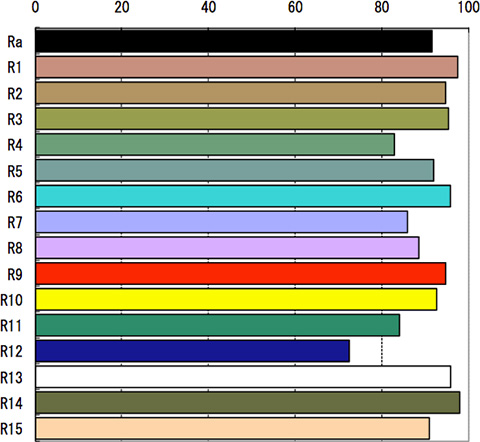
4000 K (high color rendering type)
Application example
By using the product in a closet or powder room, skin complexions closer to those under natural sunlight can be reproduced when looking in the mirror. This product is also suitable for the shelf lighting of shop fixtures.
Projects
2 Thin and light
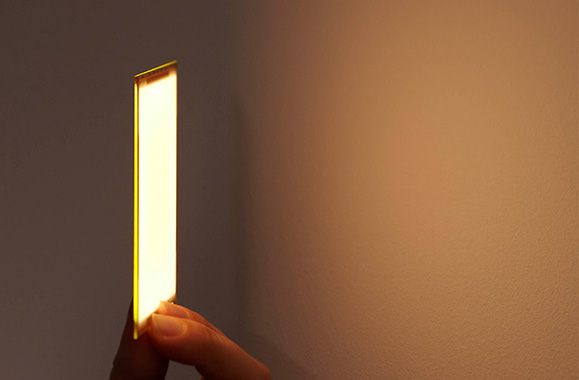
The thickness is only 1.1 mm *. Reducing the presence of the lighting device helps to create a spacious feeling.
The panel itself is light in weight and does not require a light guide or a diffuser, which helps to cut down the number of components and reduce weight.
* Excludes the thickness of the connector.
Application example
The panel’s light-weight feature allows it to be used for easily detachable lighting fixture. The thinness makes it ideal for creating a spacious feeling.
3 Mirror surface*
Due to its structure, KANEKA OLED lighting panel has a mirror-like appearance when turned off. *
This feature allows you to create a unique ambience.
* Without OCF (OCF=Optical film for enhancing the intensity)
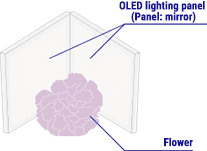
OFF

ON
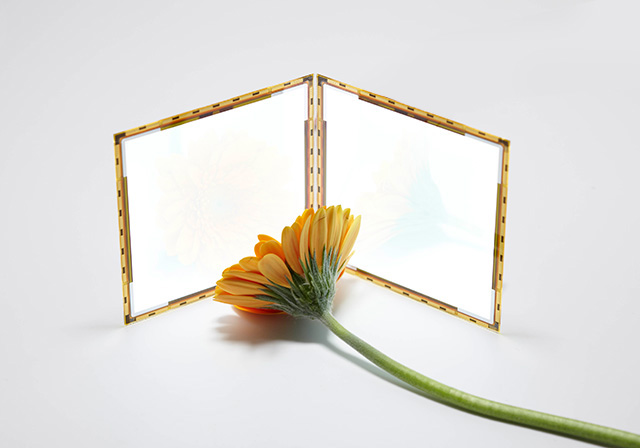
Application example
This product can be used to create a space that catches the eye such as by integrating a mirror within the lighting.
4 Friendly to people, objects, and the earth
The light generated by KANEKA OLED lighting panel emits less infrared rays than existing light sources and does not produce any ultraviolet rays.
As the light does not produce ultraviolet rays and emanates less heat from the panel itself, this product is suitable for lighting delicate items. The panel has been employed for lighting the display of national treasures. (Figure 3-2)
Because it is mercury-free, the panel is also friendly to the earth.
In terms of international standards set for human eyes, our product was assigned to an Exempt Group in the risk ranking of IEC/EN 62471 and IEC/TR 62778.
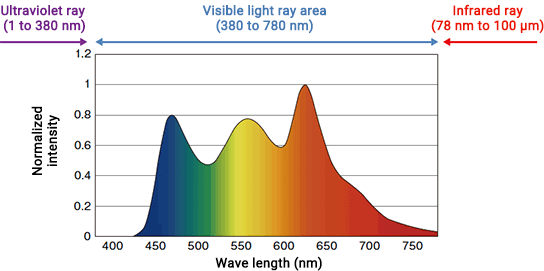
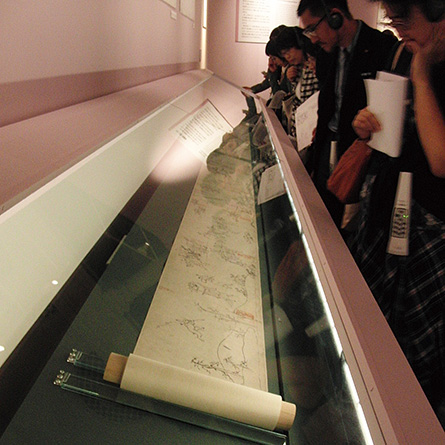
Application example
Suitable for display cases at museums and art galleries, and display cases containing precious collections.
5 Light source that does not easily degrade
Color temperatures in KANEKA OLED lighting panel do not vary greatly even if the panel is used for a long period of time. For applications where the light-emitting surface is visible such as foot lights, it is possible to control variations in balance between the luminescent color and the color of the wallpaper. For lighting items such as with undershelf lighting, it is possible to control the color tone of the displayed items.
With a low intensity deterioration property, the average luminescence life-time LT70* is 50,000 hours for 3000 K normal type and 40,000 hours for 3000 K and 4000 K high rendering types.
- * In the case that the life time is defined as luminance which has decreased 30% from the initial luminance. (according to KANEKA measurement method). This is not a guarantee of the lifetime of KANEKA OLED.
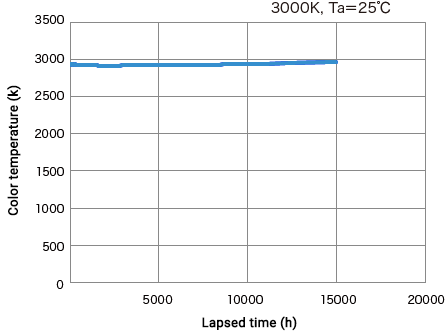
(3000K normal type)
* The values in the graph are measured values, not guaranteed values. Measurement data is continuously being collected.

